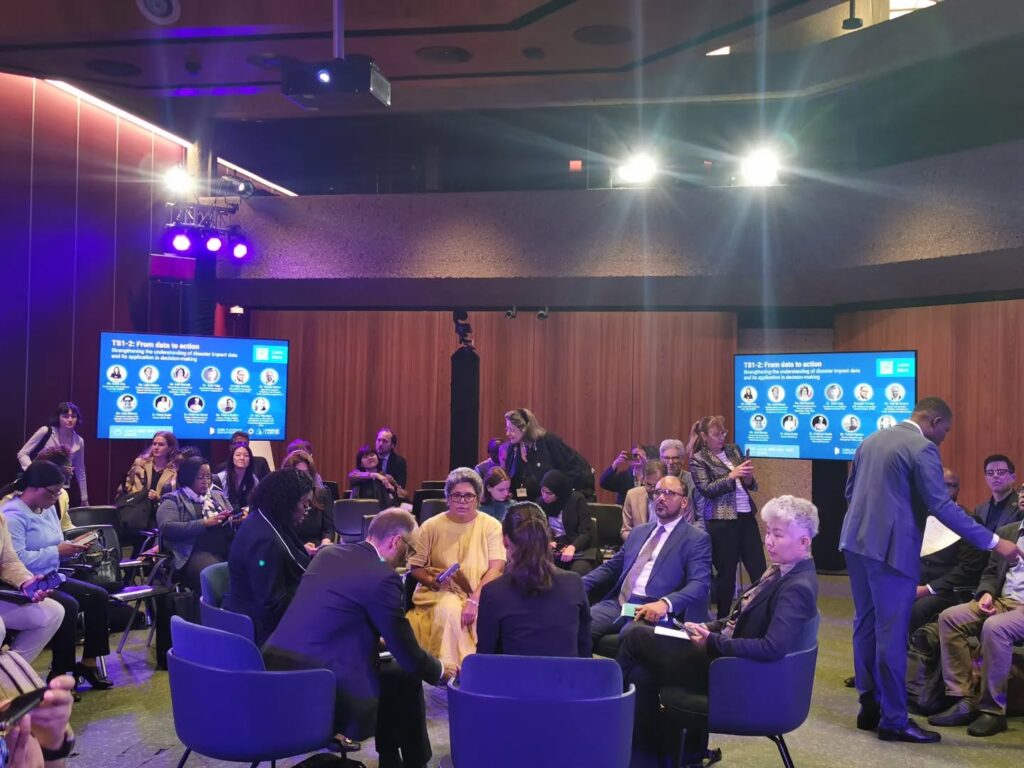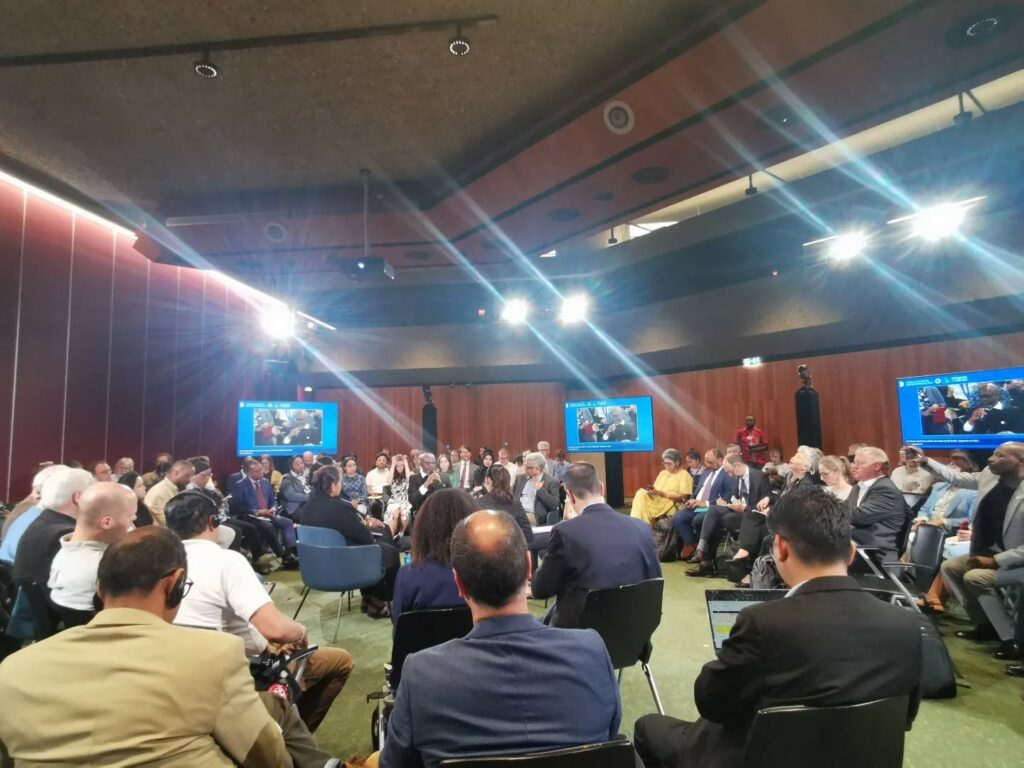


– ข้อมูลถูกเก็บแยกส่วน: ข้อมูลภัยพิบัติมักจะถูกเก็บแยกกันในแต่ละระดับ ภาคส่วน และระดับ ทำให้การนำข้อมูลไปใช้ประโยชน์ในบริบทต่างๆ ตั้งแต่ระดับประเทศไปจนถึงระดับท้องถิ่นเป็นไปอย่างจำกัด และขัดขวางการดำเนินการที่มีประสิทธิภาพโดยชุมชน
– การเข้าถึงข้อมูลของชุมชน: ชุมชนท้องถิ่นเผชิญกับอุปสรรคในการเข้าถึงและนำข้อมูลระดับชาติไปใช้ เนื่องจากข้อจำกัดด้านเทคโนโลยี ขีดความสามารถ และทรัพยากรทางการเงิน
– ความน่าเชื่อถือและคุณภาพของข้อมูล: ความน่าเชื่อถือของข้อมูล คุณภาพของข้อมูล และกลไกการแบ่งปันข้อมูลยังคงเป็นปัญหาที่เกิดขึ้นอย่างต่อเนื่อง โดยเฉพาะอย่างยิ่งสำหรับความร่วมมือข้ามพรมแดนและระดับภูมิภาค
– การละเลยประเด็นเรื่องเพศสภาพและการมีส่วนร่วม: การพิจารณาเรื่องเพศสภาพและการมีส่วนร่วมในการรวบรวมและใช้ข้อมูลมักถูกมองข้าม ซึ่งส่งผลกระทบต่อความเกี่ยวข้องและการยอมรับข้อมูลภัยพิบัติ
– ระดมวิทยาศาสตร์และเทคโนโลยี: เพื่อลดความเสี่ยงจากภัยพิบัติ โดยการสร้างขีดความสามารถ พัฒนามาตรฐาน และส่งเสริมความร่วมมือข้ามภาคส่วน
– แปลงงานวิจัยเป็นเครื่องมือ: แปลงานวิจัยและความรู้ให้เป็นเครื่องมือและเทคโนโลยีที่ใช้งานได้จริง ซึ่งเข้าถึงได้ในระดับท้องถิ่น
– มีส่วนร่วมกับชุมชน: มีส่วนร่วมกับชุมชนในการรวบรวมและวิเคราะห์ข้อมูล ส่งเสริมวิทยาศาสตร์พลเมือง และรวมความรู้ท้องถิ่นเพื่อข้อมูลเชิงลึกที่เกี่ยวข้องและนำไปปฏิบัติได้มากขึ้น
– เชื่อมโยงวิทยาศาสตร์และนโยบาย: โดยใช้ข้อมูลภัยพิบัติสำหรับการติดตาม ประเมินผล และการดำเนินการในท้องถิ่นรวมกับข้อมูลทางวิทยาศาสตร์
– พัฒนาและปรับเทคโนโลยี: พัฒนาและปรับใช้ผลิตภัณฑ์เทคโนโลยีและประกันภัยที่ปรับให้เข้ากับความต้องการของภูมิภาค เพื่อให้มั่นใจว่าข้อมูลสนับสนุนการลดความเสี่ยงและการสร้างความยืดหยุ่น
– เชื่อมโยงทางออกด้านเทคโนโลยีกับกรอบนโยบาย: เพื่อให้มั่นใจว่านวัตกรรมได้รับการนำไปใช้และเป็นประโยชน์ต่อชุมชนที่เปราะบาง
ภาคประชาสังคมและแนวทางที่เน้นชุมชน
– ส่งเสริมเครือข่ายข้อมูลเปิดและวิทยาศาสตร์พลเมือง: ทำให้ครัวเรือนและชุมชนสามารถรวบรวม อัปเดต และใช้ข้อมูลภัยพิบัติและความเสียหายที่เกี่ยวข้องกับการดำรงชีวิตของตนเองได้
– สร้างความไว้วางใจ: ผ่านการแบ่งปันข้อมูลที่โปร่งใส การตรวจสอบ และการมีส่วนร่วมอย่างครอบคลุมในกระบวนการตัดสินใจ
– สนับสนุนการเงินและทรัพยากร: ในทุกระดับ เพื่อสนับสนุนการรวบรวม วิเคราะห์ และนำข้อมูลไปประยุกต์ใช้เพื่อความยืดหยุ่น
แนวปฏิบัติที่ดีที่สุดและการก้าวไปข้างหน้า
– ระบบข้อมูลภัยพิบัติ: จะต้องมีความเฉพาะเจาะจงกับบริบท ฝังอยู่ในระบบนิเวศดิจิทัลและการกำกับดูแลที่กว้างขึ้น และได้รับการสนับสนุนจากการฝึกอบรมและการสร้างขีดความสามารถอย่างต่อเนื่อง
– การลดความเสี่ยงจากภัยพิบัติโดยชุมชน: ควรให้ความสำคัญกับการมีส่วนร่วมของนักแสดงในท้องถิ่นในกระบวนการข้อมูล ทำให้ข้อมูลทางวิทยาศาสตร์เป็นที่เข้าใจและนำไปปฏิบัติได้สำหรับทุกคน
– มาตรฐานข้อมูล: ควรมีความยืดหยุ่นต่อบริบทท้องถิ่น โดยเน้นที่วัตถุประสงค์และระดับของการตัดสินใจที่จำเป็น
– การตัดสินใจ: ควรตั้งอยู่บนข้อมูลที่แยกย่อยและผ่านการตรวจสอบแล้ว โดยผู้กำหนดนโยบายมีส่วนร่วมอย่างแข็งขันในการแบ่งปันและตีความข้อมูล
#ลดความเสี่ยงจากภัยพิบัติ#ข้อมูลสู่การปฏิบัติ#ความยืดหยุ่นของชุมชน#DRR#วิทยาศาสตร์เพื่อกำหนดนโยบาย#เสียงจากท้องถิ่น
From Data to Action: Enhancing Disaster Impact Data for Decision-Making
#Key Challenges
– Disaster data often remains siloed across scales, sectors, and levels, limiting its use from national to local contexts and hindering effective, community-based action.
– Local communities face barriers in accessing and applying national-level data due to limited technology, capacity, and financial resources.
– Trust in data, data quality, and data sharing mechanisms are persistent issues, especially for cross-border and regional collaboration.
– Gender considerations and inclusivity in data collection and use are often overlooked, impacting the relevance and acceptance of disaster data.
#Roles and Recommendations
Academia and Research (IRDR):
– Mobilize science and technology for disaster risk reduction by building capacity, developing standards, and fostering multi-sector partnerships.
– Translate research and knowledge into practical tools and technologies that are accessible at the local level.
– Engage communities in data collection and analysis, promoting citizen science and integrating local knowledge for more relevant and actionable insights.
#Regional and International Organizations (European Commission, CCRIF, SPC):
– Bridge science and policy by using disaster data for monitoring, evaluation, and localized action.
– Develop and adapt technology and insurance products tailored to regional needs, ensuring data supports risk reduction and resilience building.
– Connect technology solutions to policy frameworks, ensuring innovations are implemented and benefit vulnerable communities.
#Civil Society and Community-Based Approaches:
– Promote open data networks and citizen science, enabling households and communities to collect, update, and use disaster and loss data relevant to their livelihoods.
– Foster trust through transparent data sharing, validation, and inclusive participation in decision-making processes.
– Advocate for finance and resources at all levels to support data collection, analysis, and application for resilience.
#Best Practices and Moving Forward
– Disaster data systems must be context-specific, embedded in broader digital and governance ecosystems, and supported by ongoing training and capacity building.
– Community-based disaster risk reduction should prioritize engaging local actors in data processes, making scientific data understandable and actionable for all.
– Data standards should be flexible to local contexts, focusing on the purpose and level of decision-making required.
– Decision-making should be grounded in disaggregated, validated data, with policymakers actively participating in data sharing and interpretation.
Turning disaster data into action requires breaking down silos, building trust, and ensuring that data, technology, and finance reach all levels—from national to household. Inclusive, community-driven approaches and strong science-policy linkages are essential to create resilient futures and informed disaster risk reduction strategies.
#DisasterRiskReduction#DataToAction#CommunityResilience#DRR#ScienceForPolicy#LocalVoices

